
Marquess of Headfort is a title in the Peerage of Ireland. It was created in 1800 for Thomas Taylour, 2nd Earl of Bective.

Earl of Iddesleigh, in the County of Devon, is a title in the Peerage of the United Kingdom. It was created in 1885 for the Conservative politician Sir Stafford Northcote, 8th Baronet, of Pynes in the parish of Upton Pyne near Exeter in Devon and lord of the manor of Iddesleigh, 28 miles north-west of Pynes. He served as President of the Board of Trade, Secretary of State for India, Chancellor of the Exchequer, First Lord of the Treasury and Foreign Secretary and was Joint Leader of the Conservative Party from 1881 to 1885. Northcote was made Viscount St Cyres, of Newton Saint Cyres in the County of Devon, at the same time he was given the earldom. This title is also in the Peerage of the United Kingdom.

Baron Brownlow, of Belton in the County of Lincoln, is a title in the Peerage of Great Britain. It was created in 1776 for Sir Brownlow Cust, 4th Baronet. The Cust family descends from Richard Cust (1622-1700) of The Black Friars, Stamford, who represented Lincolnshire and Stamford in Parliament. In 1677 he was created a baronet, "of Stamford in the County of Lincoln". He was succeeded by his grandson Richard Cust, 2nd Baronet, who married Anne Brownlow, daughter of Sir William Brownlow, 4th Baronet, "of Humby", Lincolnshire, and sister and sole heiress of John Brownlow, 1st Viscount Tyrconnel, 5th Baronet of Belton House, Lincolnshire. The 2nd Baronet's son Sir John Cust, 3rd Baronet, sat as a Member of Parliament for Grantham and served as Speaker of the House of Commons from 1761 to 1770 and in 1754 inherited the Brownlow estates, including Belton, on the death of his childless maternal uncle Viscount Tyrconnel. His son Brownlow Cust, 4th Baronet, represented Ilchester, Somerset, and Grantham in Parliament and in 1776 was raised to the peerage as Baron Brownlow, "of Belton in the County of Lincoln", chiefly in recognition of his father's services. He was succeeded by his son John Cust, 2nd Baron Brownlow, who had sat as a Member of Parliament for Clitheroe, Lancashire, and also served as Lord Lieutenant of Lincolnshire for many years. In 1815 he was created Viscount Alford, "in the County of Lincoln", and Earl Brownlow, both in the Peerage of the United Kingdom. In 1810 the future 1st Earl had married Sophia Hume, a daughter of Sir Abraham Hume, 2nd Baronet, of Wormleybury, by his wife Lady Amelia Egerton, a great-granddaughter of John Egerton, 3rd Earl of Bridgewater.
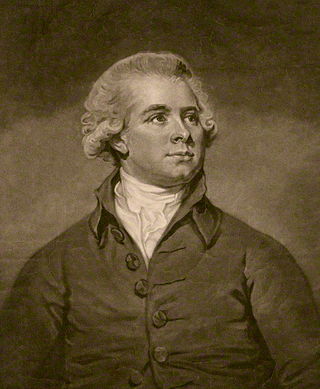
Baron Henniker, of Stratford-upon-Slaney in the County of Wicklow, is a title in the Peerage of Ireland. It was created in 1800 for Sir John Henniker, 2nd Baronet, who had previously represented Sudbury and Dover in the House of Commons. His son, the second Baron, also sat as a Member of Parliament. In 1792 he assumed by Royal licence the additional surname of Major. He was childless and was succeeded by his nephew, the third Baron. He assumed the additional surname of Major by Royal licence in 1822. His son, the fourth Baron, represented Suffolk East in Parliament. In 1866 he was created Baron Hartismere, of Hartismere in the County of Suffolk, in the Peerage of the United Kingdom. This title gave him and his descendants an automatic seat in the House of Lords. He was succeeded by his son, the fifth Baron. He also sat as Member of Parliament for Suffolk East and later held minor office in the Conservative administrations of Benjamin Disraeli and Lord Salisbury. His grandson, the eighth Baron, was a prominent diplomat and notably served as British Ambassador to Jordan and to Denmark. As of 2014 the titles are held by the latter's son, the ninth Baron, who succeeded in 2004.
Baron Huntingfield is a title created three times, twice in the Peerage of England and once in the Peerage of Ireland. The first two creations were by writ, but little more is known about them, except that John de Huntingfield, who was created Baron Huntingfield in 1362, married Margery de Welles, daughter of John de Welles, 4th Baron Welles. John was dead by December 1376, when Margery remarried. Both titles probably became extinct or fell into abeyance on the death of their first holders. The third creation, Baron Huntingfield, of Heveningham Hall in the County of Suffolk, was created in the Peerage of Ireland in 1796 for Sir Joshua Vanneck, 3rd Baronet, Member of Parliament for Dunwich. His son, the second Baron, also represented this constituency in the House of Commons. His great-grandson, the fifth Baron, was Conservative Member of Parliament for Eye and Governor of Victoria. As of 2013 the titles are held by the latter's grandson, the seventh Baron, who succeeded his father in 1994.

Baron Hindlip, of Hindlip in the County of Worcester and of Alsop-en-le-Dale in the County of Derby, is a title in the Peerage of the United Kingdom. It was created in 1886 for the businessman and Conservative politician Sir Henry Allsopp, 1st Baronet. He was head of the brewing firm of Samuel Allsopp & Sons of Burton upon Trent, and he also represented East Worcestershire in Parliament.

Baron Hazlerigg, of Noseley in the County of Leicester, is a title in the Peerage of the United Kingdom. It was created in 1945 for Sir Arthur Hazlerigg, 13th Baronet. He had previously served as Lord Lieutenant of Leicestershire. As of 2023 the title is held by his great-grandson, the fourth Baron, who succeeded his father in 2022.
Baron Gainford, of Headlam in the County Palatine of Durham, is a title in the Peerage of the United Kingdom. It was created on 3 January 1917 for the Liberal politician Jack Pease, a member of the Darlington Pease family. He notably served as President of the Board of Education from 1911 to 1915. Pease was the second son of Sir Joseph Pease, 1st Baronet, and the grandson of Joseph Pease, while Arthur Pease was his uncle and Sir Arthur Pease, 1st Baronet, Beaumont Pease, 1st Baron Wardington, and Herbert Pease, 1st Baron Daryngton, were his first cousins. The third baron was a former member of the London County Council and of the Greater London Council. As of 2013 the title is held by his younger brother, the fourth baron, an architect and town planner; County Planning Officer for Ross and Cromarty 1967–1975 and Scottish Office Inquiry Reporter 1978–1993.

Baron Glenarthur, of Carlung in the County of Ayr, is a title in the Peerage of the United Kingdom. It was created in 1918 for the Scottish businessman Sir Matthew Arthur, 1st Baronet. He had already been created a baronet, of Carlung in the County of Ayr, on 28 November 1902. The title of the barony was derived from the joining of his mother's maiden surname name of Glen and his patronymic Arthur.
Baron Joicey, of Chester-le-Street in the County of Durham, is a title in the Peerage of the United Kingdom. It was created in 1906 for the coal mining magnate and former Liberal Member of Parliament for Chester-le-Street, Sir James Joicey, 1st Baronet. He had already been created a baronet, of Longhirst and of Ulgham, both in the County of Northumberland, in the Baronetage of the United Kingdom in 1893. He was succeeded by his eldest son, the second Baron. He was High Sheriff of County Durham in 1910. The second baron lost his son young, and on his death his younger brother succeeded to the barony. The third Baron was an army officer, whose elder son died in WWII without male issue, and he was thus succeeded by his younger son, the fourth baron. As of 2010 the titles are held by the latter's eldest son, the fifth Baron, who succeeded in 1993.
Baron Congleton, of Congleton in the County Palatine of Chester, is a title in the Peerage of the United Kingdom. It was created in 1841 for the Whig politician and former Secretary at War and Paymaster of the Forces Sir Henry Parnell, 4th Baronet. His eldest son, the second Baron, devoted his life to religious work and was an early member of the Plymouth Brethren. The latter was succeeded by his younger brother, the third Baron. He served in the Royal Navy and fought at the Battle of Navarino in 1827. His eldest surviving son, the fourth Baron, was a major-general in the British Army and served in the Crimean War and in the Anglo-Zulu War. The latter's eldest son, the fifth Baron, was killed in action in Ypres Salient during the First World War and was succeeded by his younger brother, the sixth Baron. As of 2015, the titles are held by the latter's grandson, the ninth Baron, who succeeded his father in 2015.

Baron Cottesloe, of Swanbourne and Hardwick in the County of Buckingham, is a title in the Peerage of the United Kingdom. It was created on 2 March 1874 for the Conservative politician and former Chief Secretary for Ireland, Sir Thomas Fremantle, 1st Baronet (1798–1890). He was the son of Admiral Sir Thomas Fremantle (1765–1819). Lord Cottesloe had already been created a Baronet, of Swanbourne in the County of Buckingham, on 14 August 1821, chiefly in recognition of his father's services, and with remainder to the latter's heirs. His father Sir Thomas Fremantle was created Baron Fremantle, of the Austrian Empire, which Lord Cottesloe inherited in 1819 with the death of his father. Subsequently, in 1822 he was given a Royal licence, which authorized him and his successors to use the title in Britain. However, a warrant issued on 27 April 1932 withdrew all the royal licences, only allowing the use of the title to the then current holders, their heir and their heir's heir. The fifth baron was the last holder being allowed to use the Austrian title in the United Kingdom.

Baron Lawrence, of the Punjab and of Grateley in the County of Southampton, was a title in the Peerage of the United Kingdom. It was created in 1869 for Sir John Lawrence, 1st Baronet, the former Viceroy of India. He had already been created a Baronet, in 1858. His son, the second Baron, served in the Conservative administrations of Lord Salisbury and Arthur Balfour as a government whip from 1895 to 1905. The title became extinct on the death of the fifth Baron on 14 August 2023.
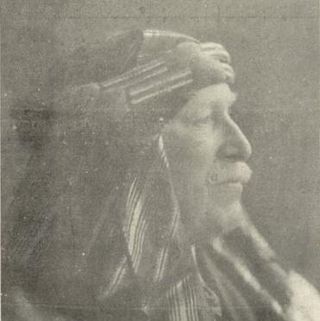
Lord Headley, Baron Allanson and Winn, of Aghadoe in the County of Kerry, was a title in the Peerage of Ireland. It was created in 1797 for Sir George Allanson-Winn, 1st Baronet, a former Baron of the Court of the Exchequer and Member of Parliament for Ripon. He had already been created a Baronet, of Little Warley in the County of Essex, in the Baronetage of Great Britain on 14 September 1776. His son, Charles Winn-Allanson, 2nd Baron Headley, represented Ripon, Malton and Ludgershall in Parliament. In 1833 he succeeded a distant relative as 8th Baronet, of Nostel. His nephew, the third Baron, sat in the House of Lords as an Irish Representative Peer from 1868 to 1877. His son, the fourth Baron, was an Irish Representative Peer from 1883 to 1913. His cousin, Rowland Allanson-Winn, 5th Baron Headley, was a prominent convert to Islam. On the death in 1994 of the latter's younger son, Charles Allanson-Winn, 7th Baron Headley, the titles became extinct.
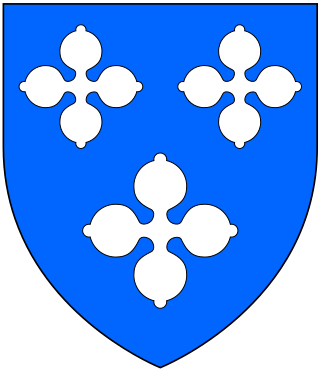
Viscount D'Abernon, of Esher and of Stoke d'Abernon in the County of Surrey, was a title in the Peerage of the United Kingdom. It was created on 20 February 1926 for the politician, diplomat and writer Edgar Vincent, 1st Baron D'Abernon who had been created Baron D'Abernon, of Esher in the County of Surrey, on 2 July 1914. In 1936 he succeeded his elder brother as sixteenth Baronet, of Stoke d'Abernon. All three titles became extinct on his death in 1941.

Baron Hillingdon, of Hillingdon in the County of Middlesex, was a title in the Peerage of the United Kingdom held by the Mills family.
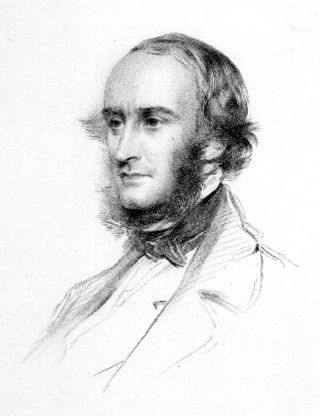
Baron Colebrooke, of Stebunheath in the County of Middlesex, was a title in the Peerage of the United Kingdom. It was created in 1906 for Sir Edward Colebrooke, 5th Baronet. He held several positions at the British court. The Colebrooke family descended from the London banker James Colebrooke. His second son James Colebrooke represented Gatton in the House of Commons. On 12 October 1759 he was created a baronet, of Gatton in the County of Surrey, in the Baronetage of Great Britain, with remainder to his younger brother George. He was succeeded according to the special remainder by his younger brother George, the second Baronet. He was Member of Parliament for Arundel and also served as Chairman of the Honourable East India Company.
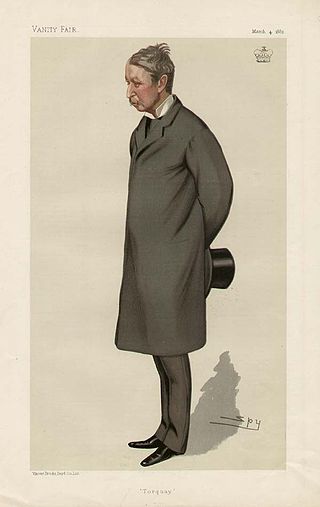
Lawrence Palk, 1st Baron Haldon, known as Sir Lawrence Palk, 4th Baronet from 1860 to 1880, was a British Conservative Party politician.

The Gibson, later Gibson-Carmichael, later Gibson-Craig-Carmichael Baronetcy, of Keirhill in the County of Edinburgh, is a title in the Baronetage of Nova Scotia. It was created on 31 December 1702 for Thomas Gibson, with remainder to his heirs male. The sixth Baronet assumed the additional surname of Carmichael. The eleventh Baronet was a Liberal politician. In 1912, he created Baron Carmichael, of Skirling in the County of Peebles, in the Peerage of the United Kingdom. The barony died in 1926, while he was succeeded in the baronetcy by his kinsman Sir Henry Thomas Gibson-Craig-Carmichael, 5th Baronet, of Riccarton, who became the twelfth Baronet of Keirhill and assumed the additional surname of Carmichael.
Sir Lawrence Vaughan Palk, 3rd Baronet of Haldon House in the parish of Kenn, near Exeter in Devon, was a landowner and Member of Parliament for Ashburton, Devon, from 1818 to 1831.















